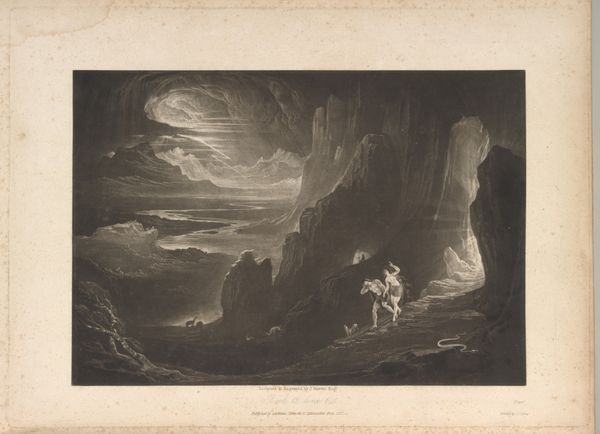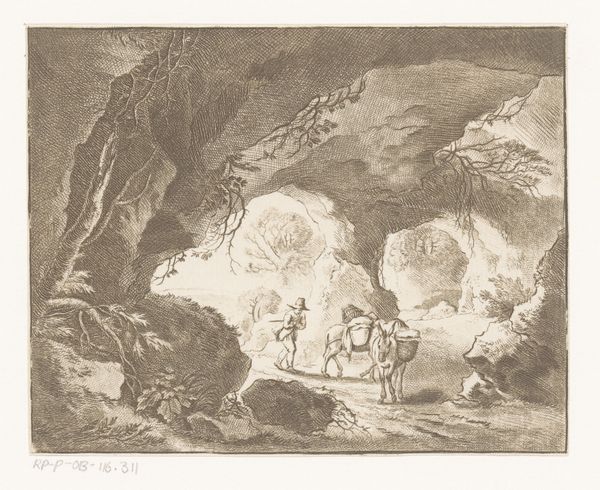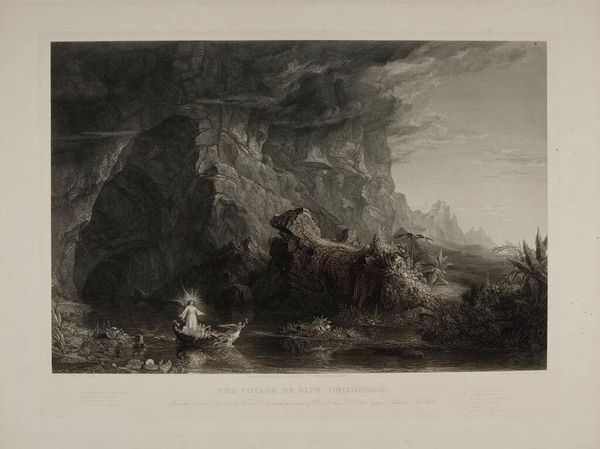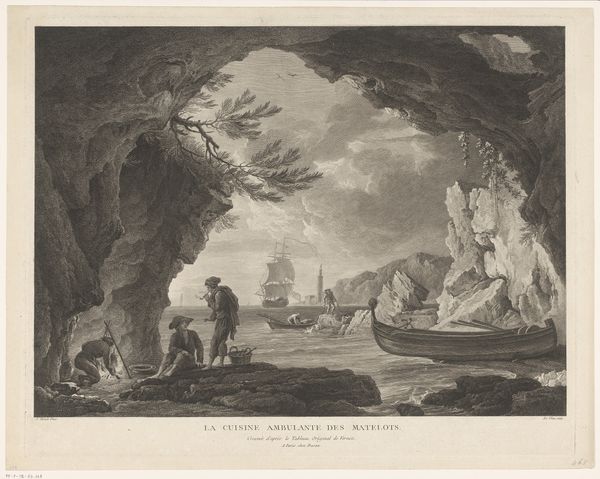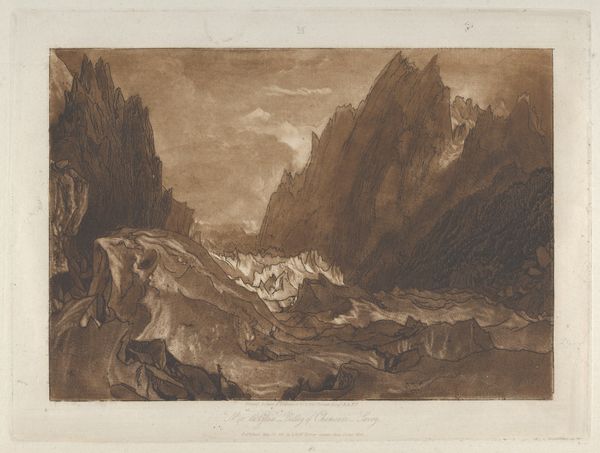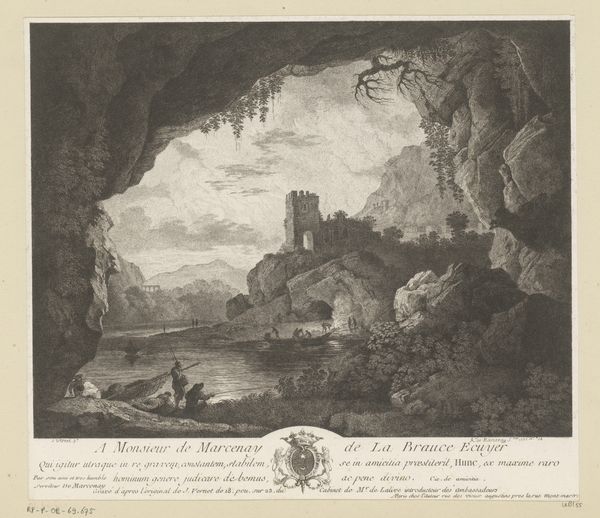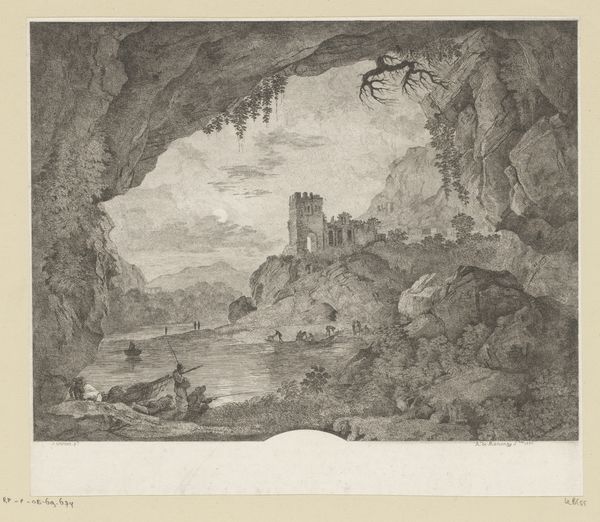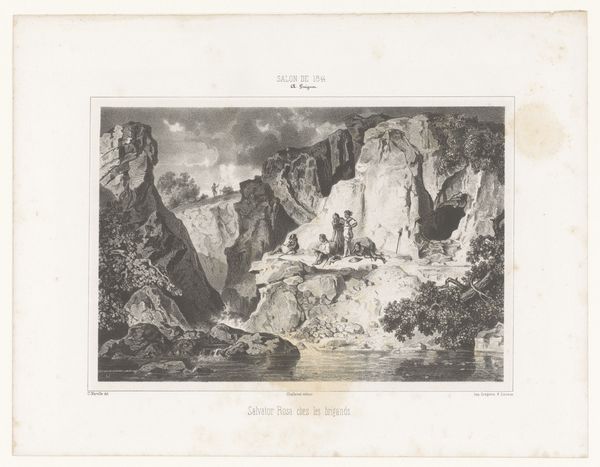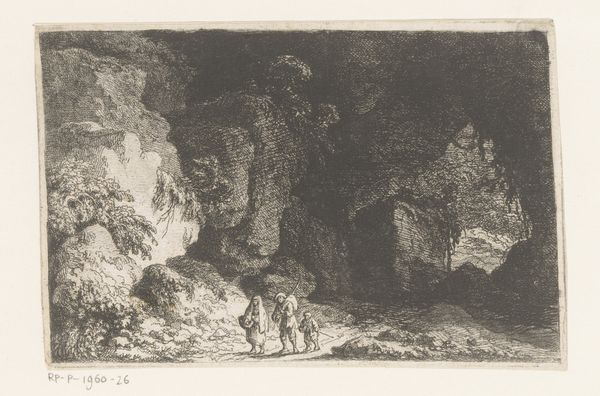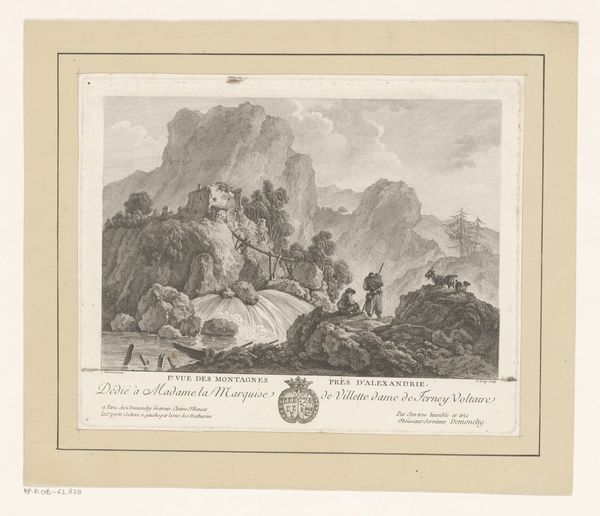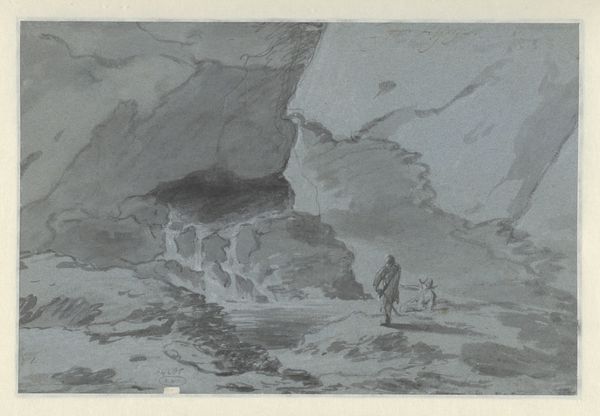
print, ink, engraving
#
neoclassicism
# print
#
landscape
#
charcoal drawing
#
figuration
#
ink
#
engraving
Dimensions: image: 51.2 x 68 cm (20 3/16 x 26 3/4 in.) sheet: 51.4 x 68.1 cm (20 1/4 x 26 13/16 in.) overall (text plate): 7.8 x 68.1 cm (3 1/16 x 26 13/16 in.)
Copyright: National Gallery of Art: CC0 1.0
Editor: Here we have Joseph Fischer’s "Boating Party in an Underground Cave" from 1794, rendered in ink and engraving. It strikes me as incredibly theatrical, almost stage-like with its dramatic lighting. What draws your eye when you look at this piece? Curator: Immediately, I'm struck by the performative aspects inherent in the engraving process itself. Look at the deliberate choice of ink and engraving to depict this scene – a decision laden with socio-economic implications. Engravings were reproducible, disseminated widely. This begs the question, for whom was this subterranean gathering staged, and who had access to viewing its representation? What labor was involved in producing not only the party itself but also in its visual documentation? Editor: That’s fascinating! I hadn’t considered the reproduction aspect so deeply. So, the choice of engraving itself tells a story about class and access? Curator: Precisely! The materials – ink, paper, the engraver's tools – all speak to specific workshops and economies of production. Consider how the act of engraving translates the original event. It's a form of manual labor transforming one material (the artist’s original sketch, perhaps) into another (the reproducible print). How does this shift alter the "authenticity" or "value" of the scene represented? Was this meant to ennoble or elevate the person the engraving was dedicated to? Editor: I see, it makes me think about who had the resources for staging an underground party, and even more, commissioning the making and distribution of these prints! Curator: Absolutely! And further, who mined the materials, who made the inks? What power dynamics are involved at each step of this process? The “underground” aspects of not only the party but of material production, invite a stark awareness of the unseen labor necessary for artistic creation. Editor: Wow, I never thought about this image in those terms before, thinking of it as an active record of materials, labor, and class. It gives "art for art's sake" a whole new meaning. Curator: Indeed. And it's a reminder that every artwork carries within it the fingerprints – both literal and metaphorical – of its making.
Comments
No comments
Be the first to comment and join the conversation on the ultimate creative platform.
